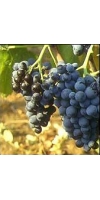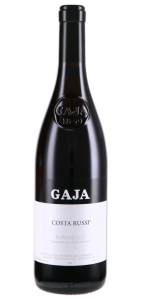Nero d'Avola

Nero d’ Avola – a red grape variety native to the Italian region of Sicily. The name Nero d’ Avola is directly linked to the town of Avola on the Southeastern Coast of Sicily. The translation of the name, Nero d’ Avola is “Black of Avola”, in reference to its color. It is also called “Calabrese” in some regions and is considered the central and most popular grape variety in Sicily. For hundreds of years, Nero d’ Avola grapes are cultivated in mass production on the Island of Sicily. Nero d’ Avola has a huge historical impact on the Italian wine making culture. Nero d’ Avola has a very distinctive dark skin, as its name suggests, which is regularly used to enhance the color and body of less intense wines in the Italian region. Interestingly, Nero d’ Avola has a vague point of origin as it can be argued to have both a starting point in Calabria and Avola. Calabria calls Nero d’ Avola, “Calabrese”, which translates to “of Calabria”. This exact term could also stem from the word “Calaurisi”, which is historically a name for a person from Avola. Nero d’Avola was a blending grape for most of the 1900’s, and never had the opportunity to make a wine label. Slowly, Nero d’ Avola made its way to being produced as its own grape varietal. Much like Syrah, Nero d’ Avola prefers growing in hot climates and will even display with similar characteristics such as plum, red fruit, chocolate, and raspberry notes. Nero d’ Avola is high in tannin, with medium to full body, and relatively medium acidity.
Gaja Costa Russi Nebbiolo is made from 100 percent Nebbiolo.
Costa (Italian for the side of the hill facing the sun) Russi (the nickname of the former owner) is ruby red in color, with a captivating aroma of blackberries, violets and roasted coffee beans. The purity of the palate is layered with dark fruit flavors and complex tannins.
STYLE: Complex, Elegant
FLAVOR: Blackberry, Violet, Roasted Coffee Beans
Review:
The 2016 Barbaresco Costa Russi is a more floral, sappy Barbaresco, offering textbook notes of black cherries, rose petals, sappy herbs, and violets. It's one of the more vibrant, juicy, and perfumed wines in the lineup and has medium to full body, bright yet integrated acidity, and the same incredibly polished yet certainly present tannins found in all these 2016s. This is another elegant 2016 that never puts a foot wrong.
-Jeb Dunnuck 98+ Points
The 2016 Barbaresco Costa Russi is ripe, creamy and enveloping, as it so often is, and yet also preserves the super classic sense of structure that runs through all these wines. In 2016, Costa Russi has an extra touch of mid-palate sweetness that gives the wine its sense of immediacy. Succulent red cherry, rosewater, kirsch, mint and dried flowers meld together in the glass. Soft and sensual, with tons of allure, Costa Russi is another winner from Gaja. Time in the glass brings out the wine's density and tannins, both of which it has in spades.
- Antonio Galloni 98
This delicate red features floral, strawberry, cherry, currant and loamy earth aromas and flavors, showing terrific balance. A line of firm tannins adds support, and the finish is long and expansive. Best from 2023 through 2045. 175 cases imported.
-Wine Spectator 97 Points
- back
Selected Options
Grape Types
Categories
Pricing
Countries
Regions
Grape Types
Wineries
Organic/Free Shipping
Ruby red in color, this Amarone Riserva offers dense and smokey aromas of dark cherries, raisins, chocolate, and anise, framed by fruity tannins and a spicy finish. With the level of complexity and balance that this wine shows, it will evolve beautifully for 10+ years.
Review:
Dense garnet, with a nose of walnut husks, toasted black pepper, sour cherries and ash. Smooth and soft on the palate, with a full body and ripe, silky tannins balanced by zesty acidity. Lovely fruit with an extremely long, nutty aftertaste.
-James Suckling 95 Points
Hailing from 1937, these certified organic vines are some of the most unique we’ve ever seen. Just a mile and a half from the Napa border on the Sonoma side of the Mayacamas, located in what is the new Moon Mountain AVA, the vines are planted along steep, contoured terraces. Finding old vineyards is rare enough, but ancient hillside head-trained vines located 1000 feet up? Downright extraordinary.
Review:
"The 2022 Zinfandel Fredericks Vineyard is medium to deep ruby in the glass. It opens slowly but steadily with multifaceted aromas of peach skin, dried red berries, dark spices, wafts of cooling botanicals and a lifted, vibrant floral perfume. The full-bodied palate is suave, concentrated and polished, hiding rustic but gentle tannins and seamless, mineral-tinged acidity with its long, perfumed finish. As with much of the 2022 Turley Zinfandels, this should unwind and come into itself after 3-5 years in bottle and provide more than a decade of enjoyment in the cellar."
- 94 Points Robert Parker





